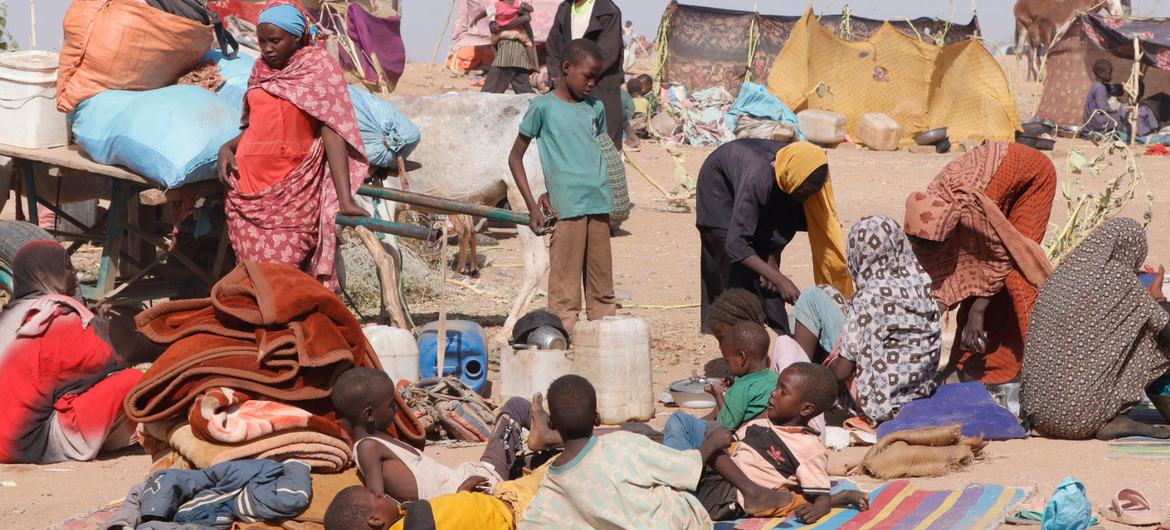Sudan is facing one of the most severe humanitarian crises in recent history, driven by an ongoing conflict that erupted in April 2023 and continues unabated despite multiple truce attempts. The fighting mainly involves the Sudanese Armed Forces (SAF) and the Rapid Support Forces (RSF), plunging the country into chaos and causing widespread devastation to civilian life, infrastructure, and the economy. The conflict’s toll on the population is catastrophic, with millions displaced inside and outside the country, soaring hunger, collapsing health services, and rampant disease outbreaks.
Over two years into the conflict, Sudan has witnessed the world’s largest displacement crisis. According to the World Health Organization and humanitarian agencies, approximately 14.5 million people have been displaced. Of these, 10.5 million remain internally displaced within Sudan, while nearly four million have fled to neighboring countries such as Egypt, South Sudan, Chad, Ethiopia, Libya, and the Central African Republic. This mass displacement strains the capacities of host countries that themselves face limited resources to meet the burgeoning humanitarian demands.
Conflict zones in Sudan, especially areas like Darfur, North Kordofan, and West Kordofan, have experienced brutal violence characterized by mass killings, looting, and destruction of villages and infrastructure. For example, coordinated attacks in North Kordofan in July 2025 led to the deaths of several hundred civilians, including women and children, and displaced thousands more. The violence continues unabated, with no effective ceasefire, and the Sudanese health system has been severely decimated by targeted attacks on hospitals and clinics. WHO reports over 119 verified attacks on health care facilities since April 2023, leaving more than 70% of hospitals in conflict zones non-operational. This destruction worsens the impact of disease outbreaks, with Sudan having reported nearly 60,000 cholera cases and over 1,600 deaths in recent months, alongside rising measles and malnutrition cases.
The humanitarian crisis is compounded by an acute and widespread food insecurity emergency. More than 24 million Sudanese face acute food shortages, with over 635,000 experiencing famine conditions, primarily in displacement camps and conflict-affected localities. Famine and hunger have intensified due to the destruction of livelihoods caused by conflict, disruption of agricultural seasons, soaring food prices, and blocked humanitarian access to those most in need. The situation is described as “entirely man-made,” with continuous fighting obstructing aid delivery and further deteriorating food supply chains.
The overall number of people at risk of starvation is close to one-third of Sudan’s population.
Added to the conflict-driven crisis are natural challenges such as heavy rains and flooding during the 2024 rainy season, which displaced hundreds of thousands more and destroyed homes and infrastructure. Seasonal rains threaten to further isolate vulnerable communities by making roads impassable and collapsing vital bridges, thereby cutting off humanitarian aid and increasing the risk of famine during the annual lean season when food insecurity peaks.
Despite international efforts and humanitarian responses, aid delivery remains severely constrained by ongoing fighting, insecurity, and funding shortfalls. The 2025 humanitarian response plan for Sudan, aiming to assist up to 21 million vulnerable people, remains underfunded, with only a fraction of required funds received. Many regions remain inaccessible to aid workers due to active hostilities and logistical challenges. Neighboring countries hosting Sudanese refugees also face strained resources, exacerbated by cuts in international aid funding, such as the suspension of a $64 million USAID funding program affecting Chad and South Sudan.
The conflict has also ushered in a broader public health disaster, with millions facing heightened risk from epidemics of cholera, measles, malaria, and malnutrition. The destruction of water and sanitation infrastructure, along with limited access to medical care, fuels these outbreaks. Vulnerable groups, particularly children under five, are severely impacted. For instance, over 3.4 million children face high risk from epidemic diseases in Sudan, underscoring the urgent need for expanded health interventions and humanitarian access.
In the face of these dire conditions, calls by humanitarian agencies and the United Nations for ceasefires to allow unimpeded aid delivery have so far failed to produce lasting peace. Fighting continues, with civilian casualties mounting from indiscriminate attacks linked to both warring factions. Political divisions within Sudan threaten further fragmentation of the country, complicating diplomatic efforts to resolve the conflict and stabilize the country.
•Humanitarian response: 21 million target for aid, but severe funding and access shortfalls
In summary,
Sudan’s ongoing conflict has precipitated a worst-in-decades humanitarian calamity characterized by massive displacement, famine, disease outbreaks, and collapse of essential services. Large segments of the population suffer from hunger and deprivation while health care infrastructure lies in ruins. With continued fighting obstructing aid and the rainy season posing additional challenges, the crisis demands urgent and sustained international attention and humanitarian support to avert further loss of life and suffering.

